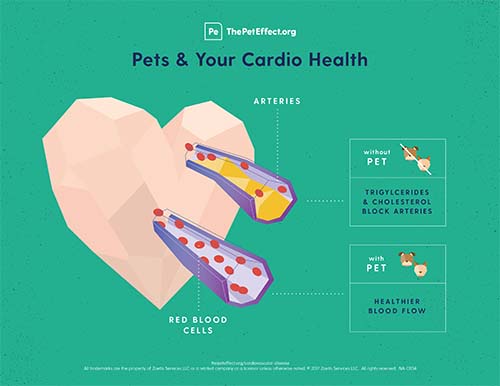STAY CURIOUS about feline urinary health!
Research shows that house soiling is the #1 reason that cats are relinquished to a shelter[1], yet many cats presenting to veterinary clinics with lower urinary signs are diagnosed with a medical condition.
Misunderstanding your cat’s behavior can jeopardize or even break your bond with them. So, if your cat is urinating outside the litter pan, don’t assume it’s behavioral. Stay curious about their urinary health and take them to the veterinarian.
STAY CURIOUS about feline urinary health
STAY CURIOUS about how you can monitor your cat’s urinary health at home
STAY CURIOUS about the human-cat bond
The Importance of Strong, Healthy Human-Cat Bonds
The Human Animal Bond Research Institute (HABRI) has teamed-up with Royal Canin to bring you trusted information on the importance of the human-cat bond, and ways to help you and your cat live healthy, happy lives together.
You love your cat, but did you know that the bond you share with them can improve your health and wellbeing?
Curious about the Human-Animal Bond?
The human-animal bond is the mutually-beneficial and dynamic relationship between people and animals that is influenced by behaviors that are essential to the health and well-being of both. Put simply, when we take great care of our cats, they will take great care of us!
People are happier and healthier in the presence of pets, and there’s strong scientific research on the benefits of owning and interacting with companion animals for people of all ages and health conditions. Scientifically-documented benefits of the human-animal bond include decreased blood pressure, reduced stress, increased social connection, and enhanced feelings of emotional well-being.
Health Benefits of the Human-Cat Bond
The human-cat bond has many health benefits, including:
Social Support
Cats can serve as a source of social and emotional support for their owners[2], and are positively associated with social contact and interaction[3].
The routines associated with basic cat care – such as feeding, grooming and playing – can help instill a sense of purpose and improve our wellbeing[4], especially for those with a long-term mental health condition[5].
Curious about the best routine for your cat to keep them healthy and happy? Learn more here.
Stress Reduction
Research shows that having a cat in our lives can help us recover faster from a stressful event, and that cat ownership is associated with lower resting baseline heart rate and blood pressure[6].
Did you know that cats experience stress too? Learn how stress plays a role in your cat’s urinary health here.
Healthy Aging
Having a cat can support older adults as they age, helping them maintain a routine and stay active. One study of older adults living independently alone found that pet owners were 36% less likely than non-pet owners to report loneliness[7].
Research has found that by serving as a soothing presence and a source of motivation for activity and routine, cats can facilitate behaviors and thoughts in older adults that enhance coping with pain[8] and reduce depression[9].
Fortunately, there are ways that we can support healthy aging in cats too.
Learn more about tips on caring for an older cat here.
Heart Health
Cat ownership has a moderating effect on heart rate and blood pressure, contributing to a decreased overall risk of death due to a heart attack or other cardiovascular events such as stroke. In one study, those without a cat had a 40% higher relative risk of death by heart attack than those with cats or past cat ownership. The study authors even concluded that acquiring a cat may be a novel strategy to reducing the risk of cardiovascular disease in high-risk individuals[10].
Child Health & Development
The calmer, quieter demeanor of a cat may be more suitable for children with sensory issues such as those with Autism. According to research, shelter cat adoption may result in reduced separation anxiety and greater empathy in children with Autism[11].
Evidence also suggests that keeping a cat in the home can help bolster the immune system of young children by protecting against allergens[12]. A birth cohort study enrolling over 700 newborn participants found that, after an 18-year follow-up, those with an indoor cat in the first year of life had nearly half the risk of developing allergies to cats later in life[13]. In a study of over 400 infants born to mothers with a history of asthma, researchers found the environmental exposure resulting from cat ownership from birth significantly lowered the prevalence of asthma among these high-risk participants[14].
Have you added or are you considering adding a new kitten to your family? Learn about kitten care and how to prepare for a new kitten here.
What You Can Do
Knowing about the science of the human-cat bond, you may be wondering what you can do to protect and strengthen the special bond you share with your feline family member. The good news is there’s so much you can do as a devoted cat owner!
A healthy cat means a healthy human-animal bond. The better we can take care of them, the better they can take care of us, and the best way to do that is to make sure your cat gets the best veterinary care possible.
Misunderstanding or misinterpreting cat behavior can jeopardize and even break the human-cat bond. It’s important to know that sometimes, unwanted behavior can actually be a sign of a medical condition.
Stay curious and learn more about your cat’s health and behavior by checking out the links below:
STAY CURIOUS about feline urinary health
STAY CURIOUS about how you can monitor your cat’s urinary health at home
STAY CURIOUS about the human-cat bond
References
[1] Salman MD, Hutchison J, Ruch-gallie R, Kogan L, Kass PH, Scarlett JM. Behavioral Reasons for Relinquishment of Dogs and Cats to 12 Shelters. J Appl Anim Welf Sci. 2000; 3(2):93-106.
[2] Stammbach, Karin B., and Dennis C. Turner. “Understanding the human—cat relationship: human social support or attachment.” Anthrozoös 12.3 (1999): 162-168.
[3] Wood L, Giles-Corti B, Bulsara M. The pet connection: pets as a conduit for social capital? Soc Sci Med. 2005 Sep;61(6):1159-73. doi: 10.1016/j.socscimed.2005.01.017. Epub 2005 Mar 3. PMID: 15970228.
[4] Brooks, Helen Louise, et al. “The power of support from companion animals for people living with mental health problems: a systematic review and narrative synthesis of the evidence.” BMC psychiatry 18.1 (2018): 1-12.
[5] Brooks, Helen, et al. “Ontological security and connectivity provided by pets: a study in the self-management of the everyday lives of people diagnosed with a long-term mental health condition.” BMC psychiatry 16.1 (2016): 1-12.
[6] Allen, Karen, Jim Blascovich, and Wendy B. Mendes. “Cardiovascular reactivity and the presence of pets, friends, and spouses: The truth about cats and dogs.” Psychosomatic medicine 64.5 (2002): 727-739.
[7] Stanley, Ian H., et al. “Pet ownership may attenuate loneliness among older adult primary care patients who live alone.” Aging & mental health 18.3 (2014): 394-399.
[8] Janevic, Mary R., et al. “The role of pets in supporting cognitive-behavioral chronic pain self-management: Perspectives of older adults.” Journal of applied Gerontology 39.10 (2020): 1088-1096.
[9] Branson, Sandy M., et al. “Depression, loneliness, and pet attachment in homebound older adult cat and dog owners.” Journal of Mind and Medical Sciences 4.1 (2017): 38-48.
[10] Qureshi, Adnan I., et al. “Cat ownership and the Risk of Fatal Cardiovascular Diseases. Results from the Second National Health and Nutrition Examination Study Mortality Follow-up Study.” Journal of vascular and interventional neurology 2.1 (2009): 132.
[11] Carlisle, Gretchen K., et al. “Exploratory study of cat adoption in families of children with autism: impact on children’s social skills and anxiety.” Journal of Pediatric Nursing 58 (2021): 28-35.
[12] Hesselmar, Bill, et al. “Pet-keeping in early life reduces the risk of allergy in a dose-dependent fashion.” PloS one 13.12 (2018): e0208472.
[13] Wegienka, G., Johnson, C. C., Havstad, S., Ownby, D. R., Nicholas, C., & Zoratti, E. M. (2011). Lifetime dog and cat exposure and dog- and cat-specific sensitization at age 18 years. Clinical and experimental allergy : journal of the British Society for Allergy and Clinical Immunology, 41(7), 979–986. https://doi.org/10.1111/j.1365-2222.2011.03747.x
[14] Stokholm, J., Chawes, B. L., Vissing, N., Bønnelykke, K., & Bisgaard, H. (2018). Cat exposure in early life decreases asthma risk from the 17q21 high-risk variant. Journal of Allergy and Clinical Immunology, 141(5), 1598-1606.





